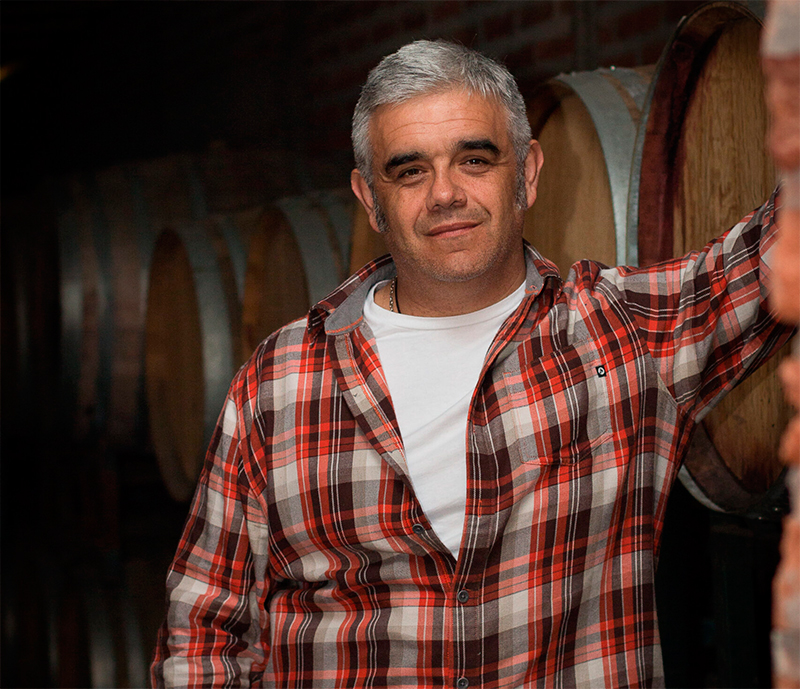
 Andes Plateau
Andes Plateau
400 2019
Cabernet Sauvignon
Maipo Valley, Chile
BOLD WINE STYLE
- Analysis: 13.5% alcohol / volume
- Varietal: 88% Cabernet Sauvignon, 8% Syrah, 3% Cabernet Franc, 3% Merlot
- Appellation: Maipo Valley, Cajón del Maipo
- pH: 3.59
- Residual Sugar: 1.63
- Total Acidity: 5.45
- Vineyard Yield: 1.5 kg/plant
- Planted area: 3 hectares

 Andes Plateau
Andes Plateau
700 2021
Red Blend
Maipo Valley, Chile
BOLD WINE STYLE
WINE DETAILS:
- Analysis: 13.5% alcohol / volume
- Varietal: 82% Cabernet Sauvignon, 12% Syrah, 3% Cabernet Franc, 3% Carignan
- Appellation: Maipo Valley, Cajón del Maipo
- pH: 3.6
- Residual Sugar: 1.59
- Bottle Aging: 10 months minimum
- Year: 2017
- Vineyard Yield: 1.5 kg/plant
- Planted area: 3 hectares
Both of these elegant wines feature hints of red fruits, graphite, and spices. On the palate, they reveal freshness, intensity, and depth. with red fruits, graphite and spicy notes. Thanks to their acidity, they are versatile wines that can be combined with a wide variety of flavors and foods.
SOILS:
Both terroirs share similar characteristics: Alluvial soils, near riverbeds and Colluvial soils, caused by mountain rock falls.
CLIMATE:
In the growing time, the temperatures are lower, allowing the wines to achieve less degrees of alcohol, lower pH and high acidity.
HARVESTS AND VINIFICATION:
The grapes are tasted and selected carefully. An early harvest allows the wines to achieve freshness and acidity. The process is made by hand, using 12 kilo boxes. They use pure native yeasts. The Cabernet Sauvignon is fermented in stainless steel tanks, while the Syrah, Carignan and the Cabernet Franc are fermented in open tanks to facilitate “Pigeage” (grinding with feet). This process is an essential part of their wine mixture. They limit the pump-over process to the minimum and taste their wines daily until the desired results are achieved.
AGING AND STORAGE:
The wines are aged for 15 months in 3rd and 4th use oak barrels. Additionally, they use an untoasted french oak foundre of 3000 liters. Afterward, the wine is stored for 6 months before being released to the public.
ABOUT THE WINERY:
Andes Plateau is a family run winery with a drive to showcase wines from the Andes Mountains. Altitude determines the identity of their wines; not many producers are in the mountains due to a high risk of frost, yet the Andes Plateau winery believes the risk is worth the reward. They produce elegant and energetic expressions of each varietal, working with the complex geology of their vineyard locations.
WINEMAKER / FOUNDER: FELIPE URIBE After studying agriculture and working two years in San Pedro Vineyards (Chile), Felipe Uribe studied at Polytechnic University in Madrid (Spain) where he got his Masters degree in Viticulture and Enology. He returned to Chile and worked at Santa Helena Vineyard. Looking for new challenges, he went to California and worked for La Crema Winery in Sonoma Valley. After returning to Chile, he worked as Chief Winemaker for Miravalle Vineyard, which is located on the upper part of Cachapoal Valley. While working as head Enologist at William Fevre Vineyard (Maipo Valley) his wine was recognized as “Chile’s Most Innovative Wine of 2012” by El Mercurio, the most important newspaper in Chile. His wine was also awarded the “Revelation Wine of 2012” by Descorchados, the famous wine guide in Chile. Learn more about the winery here.
After studying agriculture and working two years in San Pedro Vineyards (Chile), Felipe Uribe studied at Polytechnic University in Madrid (Spain) where he got his Masters degree in Viticulture and Enology. He returned to Chile and worked at Santa Helena Vineyard. Looking for new challenges, he went to California and worked for La Crema Winery in Sonoma Valley. After returning to Chile, he worked as Chief Winemaker for Miravalle Vineyard, which is located on the upper part of Cachapoal Valley. While working as head Enologist at William Fevre Vineyard (Maipo Valley) his wine was recognized as “Chile’s Most Innovative Wine of 2012” by El Mercurio, the most important newspaper in Chile. His wine was also awarded the “Revelation Wine of 2012” by Descorchados, the famous wine guide in Chile. Learn more about the winery here.
© Information and photos from Andes Plateau – All Rights Reserved.
 Join our PREMIUM WINE CLUB, enjoy amazing wines every other month. Plus, you’ll receive 10% off all retail wine purchases!
Join our PREMIUM WINE CLUB, enjoy amazing wines every other month. Plus, you’ll receive 10% off all retail wine purchases!
Learn more about our Premium Club >








 Virtual Wine Tasting Event on Zoom and Facebook LIVE
Virtual Wine Tasting Event on Zoom and Facebook LIVE







